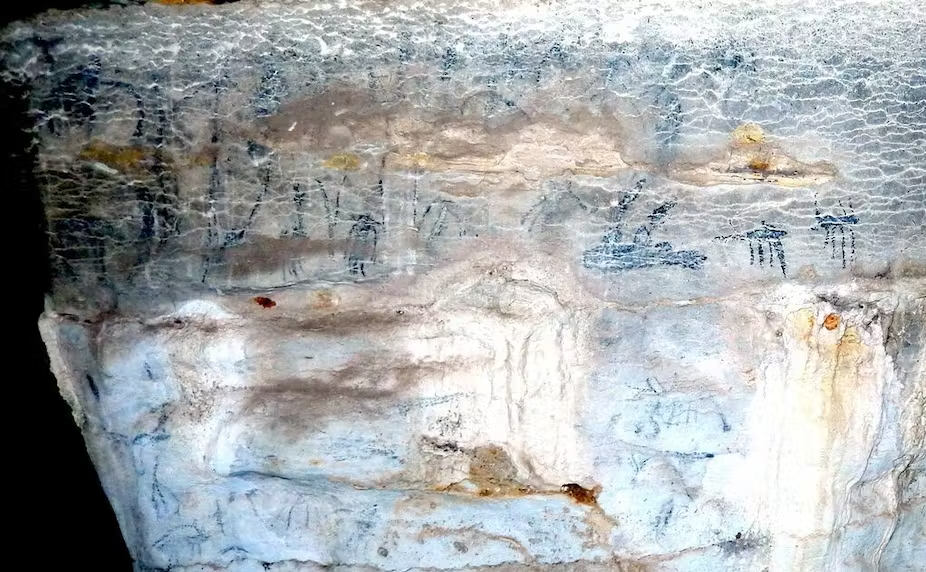Introduction
In a groundbreaking exploration, our multidisciplinary team uncovered unique prehistoric rock art drawings within the Andriamamelo Cave in western Madagascar. These ancient treasures represent the first truly pictorial art on the island, featuring depictions of nature, human-like figures, and animals, marking a departure from the previously discovered basic symbols.
Surprising Cultural Connections: Egypt, Ethiopia, and Borneo
Several scenes in the Andriamamelo Cave directly parallel Egyptian religious motifs from the Ptolemaic period (300-30 BCE), suggesting cultural connections between Madagascar and ancient Egypt. Symbols and writing on the cave walls reveal connections to the Ethiopian and Afro-Arab worlds, adding layers to the complex cultural tapestry of Madagascar’s early history. Borneo’s Ancient Cave Art Style: Intriguingly, prevalent symbology and motifs in Andriamamelo Cave evoke a two-millennia-old cave art style from Borneo, highlighting unexpected links between Madagascar and Southeast Asia.
Unveiling Extinct Species: A Glimpse into Madagascar’s Past
he rock art in Andriamamelo Cave potentially depicts at least three extinct animals of Madagascar – the giant sloth lemur, elephant birds, and a giant tortoise – challenging previous notions about the timeline of these species’ existence.
The Enigmatic M-Figures: A Transcontinental Connection
Notably, eight major images, including a falcon (Horus) and figures resembling Anubis, hint at connections with ancient Egyptian hieroglyphs, providing a visual bridge between Madagascar and the Nile. M-Figures and Ethiopian Alphabets: The mysterious M-figures, resembling the ancient Ethiopian Amharic alphabet, specifically the letter “hawt” (ሐ), open up discussions about linguistic and symbolic connections between Madagascar and the Ethiopian world. Borneo’s 2,000-Year-Old Cave Art: Surprisingly, the same M-figures appear in cave art from Borneo, emphasising the syncretic nature of Madagascar’s people, language, and culture, blending African and Asian influences.

Dating the Art and Unraveling Ancient Beliefs
Direct dating of cave art is challenging, but we speculate that the art in Andriamamelo Cave could be around 2,000 years old, suggesting its origin around the time of Cleopatra. The absence of modern motifs, Christian, Muslim, or Hindu symbolism, raises questions about the preservation of pre-Christian beliefs among certain ethnic groups in remote areas, retaining influences from Egypt, Ethiopia, and Borneo.
The Quest for Identity: Whose Art Is This?
Local informants hint at a mysterious group, the “Vazimba” or “Bosy,” living in the nearby forest, suggesting a connection to the depicted “sorcerer.” Clues about the legible script, possibly Sorabe in archaic Malagasy writing, remain enigmatic. The script possibly refers to “D-A-NT-IA-R-K,” leading to speculations about connections to historical figures such as Antiochus IV Epiphanes and ancient trade routes.
Conclusion
In addition to shedding light on Madagascar’s prehistoric past, the artwork found in the Andriamamelo Cave also poses concerns regarding the beliefs of the island’s early colonists and the complex network of cultural interactions they had with Ethiopia, Borneo, and Egypt. The rock art of Madagascar is a monument to the persistent syncretism that has moulded the distinct identity of the Malagasy people, even as we work to solve these puzzles.
Feature Image: Andriamamelo cave art panel |Courtesy: theconversation





